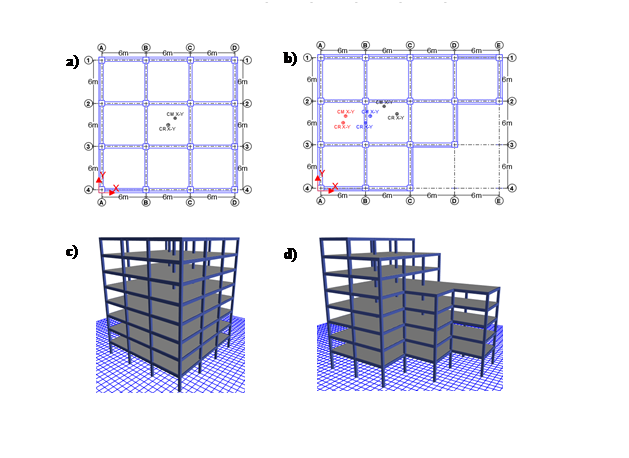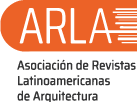Comparative analysis of the structural design of a regular and irregular building of eight levels in a ports system applying standard E.030 2003, 2016 and 2018 seismic resistant design in the city of Lima
DOI:
https://doi.org/10.51372/gacetatecnica231.5Keywords:
standard E.030, cocomparative seismic analysis, structural designAbstract
The comparative analysis of the E.030 2003, 2016 and 2018 seismic design standards is presented, in a study of structures using the portal system for office use in the city of Lima, it focuses on the comparison of vibration periods, percentage of participatory mass, design spectrum, mezzanine distortion, static basal shear force, dynamic and maximum design forces (bending, shear and axial moment), modeled using Etabs 17 software. The regular structure presented variation of 12.50% of static shear and 12.20% for the dynamic analysis according to the 2003 standard compared to 2016 - 2018 and the irregular structure varies by 50% according to the 2003 standard compared to 2016, also a variation of -16.67 % between the 2016 and 2018 norm directly affected by the irregularity changes. The 2018 standard has intermediate results considering modal periods for both structures through static and dynamic analysis.
Downloads
References
J. Yepez, “Desempeño sismico de edificaciones esenciales,” Propues. Vis. 2000, no. 65, pp. 65–86, 1996.
C. Condori y H. Tavera, “Areas probables de ruptura sísmica en el borde occidental del perú, a partir de la variación del parámetro ‘b,’” Soc. Geol. del Perú SGP, vol. 36, no. 1997, pp. 23–36, 2006.
N.T.E, “Norma técnica de edificación,” Sencico, pp. 1–45, 2003.
R.N.E, “Decreto supremo n ° 002-2014-vivienda,” Sencico, 2016.
R.N.E, “RM-355-2018-VIVIENDA (2).pdf,” Sencico, 2018.
S. Hampshire De C. Santos, L. Zanaica, C. Bucur, and S. De Souza Lima, “Comparative Study of Codes for Seismic Design of Structures,” Math. Model. Civ. Eng., vol. 9, no. 1, pp. 1–12, 2013.
J. L. C. Aedo and J. E. A. Hurtado, “Peligro sísmico en el perú,” Peligro Sism. En El Peru, no. 1, p. 19, 1993.
C. Aksoylu, A. Mobark, M. H. Arslan, and I. H. Erkan, “A comparative study on ASCE 7-16, TBEC-2018 and TEC-2007 for reinforced concrete buildings,” Rev. la Constr., vol. 19, no. 2, pp. 282–305, 2020.
C. Zajac and D. Todd, “A Comparative Analysis for Base Shear Calculations between Six Countries With Moderate Seismic Activity,” AEI, pp. 567–580, 2015.
R. Salinas Basueldo, “Fundamentos Del Analisis Dinamico De Estructuras,” Univ. Nac. ed Ing., pp. 1–24, 2013.
A. Jorge, M. Jorge, M. Jose, and H. Carlos, “Avances en la microzonificacion sismica de lima, perú,” CISMID, vol. 1, p. 12, 1991.
H. J. Maco Sarmiento, “Análisis y diseño de una edificación multifamiliar de siete pisos con muros de ductilidad limitada (tesis de titulación),” Pontif. Univ. Católica del Perú, 2014.
NTE E.060, Reglamento Nacional de Edificaciones. Norma E.060 Concreto Armado. 2016.
NTE E.050, “Suelos Y Cimentaciones,” El Peru., pp. 22–68, 2018.
J. Landingin, H. Rodrigues, H. Varum, A. Arêde, and A. Costa, “Comparative Analysis of RC Irregular Buildings Designed According to Different Seismic Design Codes,” Open Constr. Build. Technol. J., vol. 7, no. 1, pp. 221–229, 2014.
R. Medina, “Determinación del nivel de desempeño de un edificio habitacional estructurado en base a muros de hormigón armado y diseñado según normativa chilena,” Obras y Proy., no. 23, pp. 63–77, 2018.

Published
How to Cite
Issue
Section
Copyright (c) 2022 Jorge Eduardo De La Cruz Alvarez, Roberto Roland Yoctun Rios

This work is licensed under a Creative Commons Attribution-NonCommercial-ShareAlike 4.0 International License.
The opinions expressed by the authors do not necessarily reflect the position of the editor of the publication or UCLA. The total or partial reproduction of the texts published here is authorized, provided that the complete source and electronic address of this journal is cited. Authors have the right to use their articles for any purpose as long as it is done nonprofit. The authors can post on the internet or any other media the final approved version of their work.






.png)




